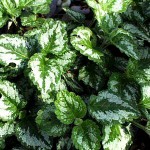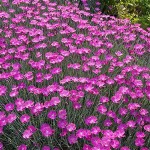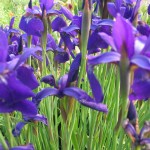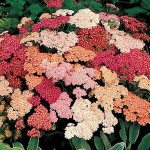Easy No-Fail Perennials for Edmonton Zone 2-3 Gardens




Short List of Tam’s Favourite Perennials to recommend to beginner gardeners:
- Yarrow (Achillea) Drought and neglect resistant!
- Siberian Iris – Grows anywhere – sun or shade.
- Firewitch Dianthus (pinks) – Great for rockeries.
- Yellow Archangel (Lamiastrum) Groundcover for sunny or very shady places.
Tips for Perennial Gardeners in Edmonton
- Think about planting some daylilies among your tulips in sunny areas of the garden. Emerging daylily foliage will hide the yellowing foliage of tulips after they bloom.
- Cut new edges where the garden meets the lawn. Standing on the lawn, rake leaves from the garden. Avoid walking on the beds until the soil has dried out some.
- Avoid raking too early in the season as emerging perennial plant tips may incur frost damage. If necessary, clean leaves around emerging plants by hand.
- Garden soil can be worked when the ground is free of frost and sufficiently dried out. Working garden soil while it is still wet from spring rains and melting snows can damage soil texture. The soil is too wet to work if it forms a firm ball when you squeeze it.
- Before new growth starts, cut back ornamental grasses and other perennial plants left standing for winter interest or those that were not cut back in fall. Cut back woody perennials, such as Russian sage, to 12 inches in mid April. Uproot perennial weeds, such as dandelions, by hand. Don’t use a hoe as growing shoots below the ground may be damaged. Remove winter mulch.
- Top-dress the garden with 2” of leaf mold or compost. Do not work the compost or leaf mold into existing garden soil; earthworms will do this for you. If you are starting a new garden, conduct a soil test. Stop in at Reilly’s to purchase a test kit. Test results will include recommendations about what to add to your soil to obtain the correct pH and nutrients for the perennials you will be planting.
- Divide summer and fall-blooming perennials when they first start to show signs of growth in spring, ideally on a cloudy day. Wait until fall to divide spring and summer-blooming perennials. Use a knife or spade to help with the division. When replanting, be certain to add organic matter to the planting hole to give the roots a healthy start.
- Add perennial and grass clippings to your compost pile. Next spring you will have fresh organic-rich compost for your garden at no cost.
- Spring-blooming perennials are wonderful gifts for a gardener or for holidays like Mother’s Day.
